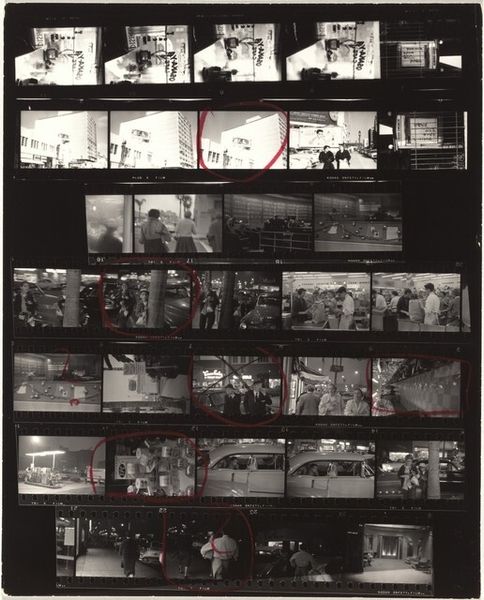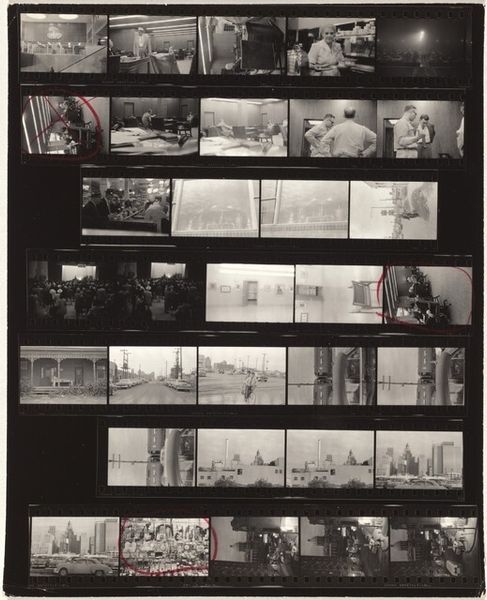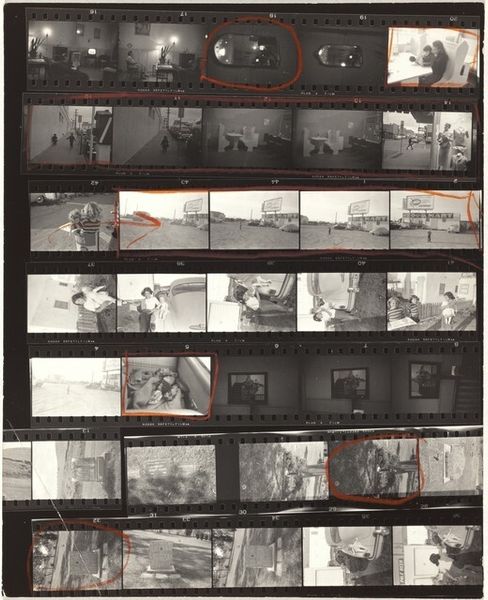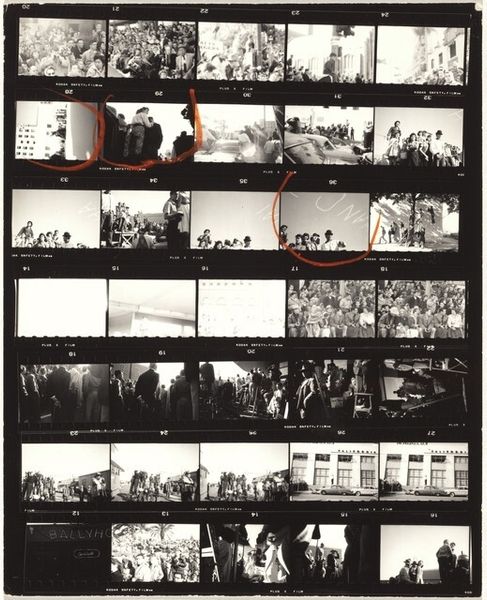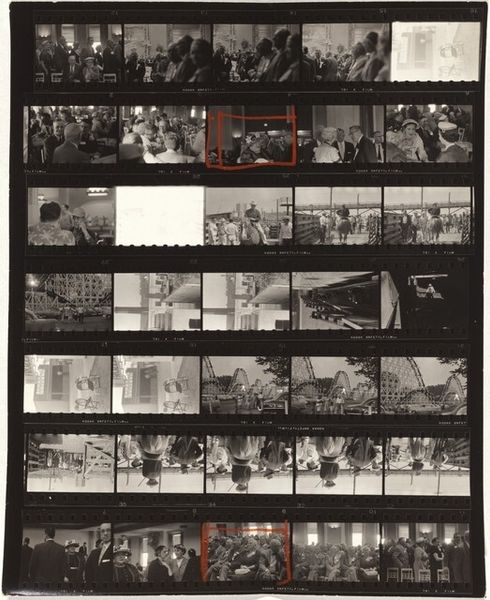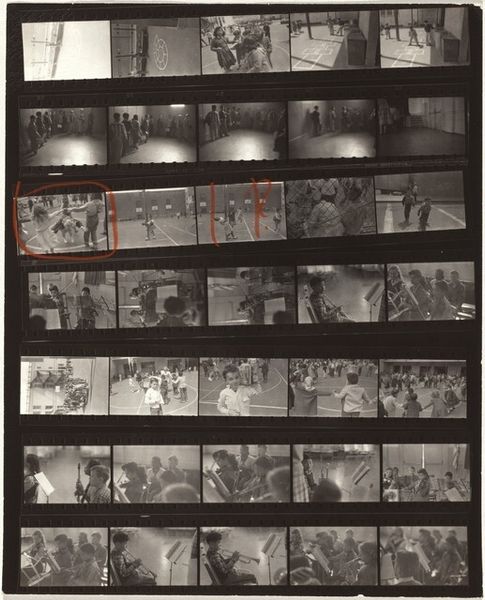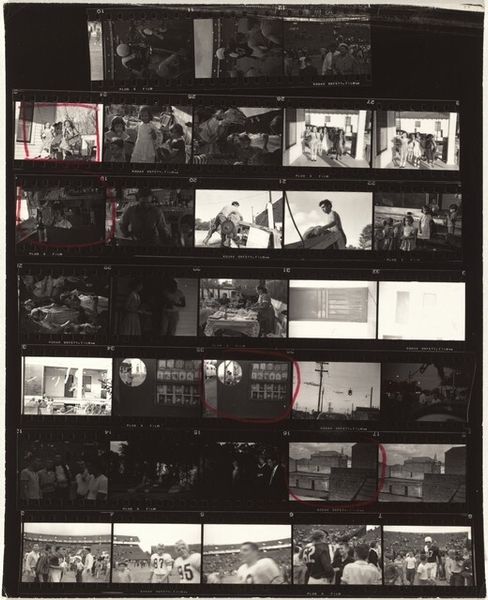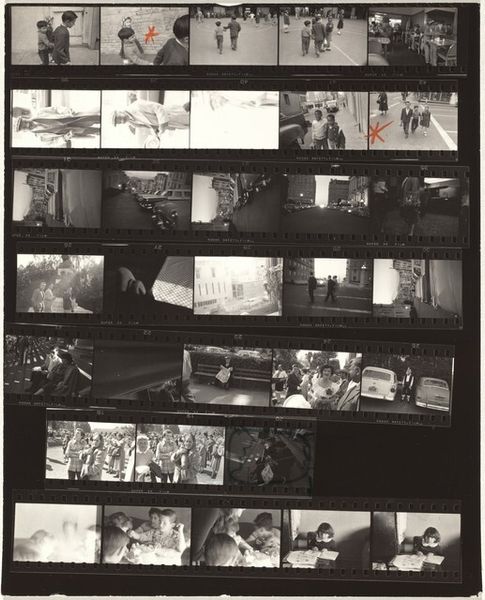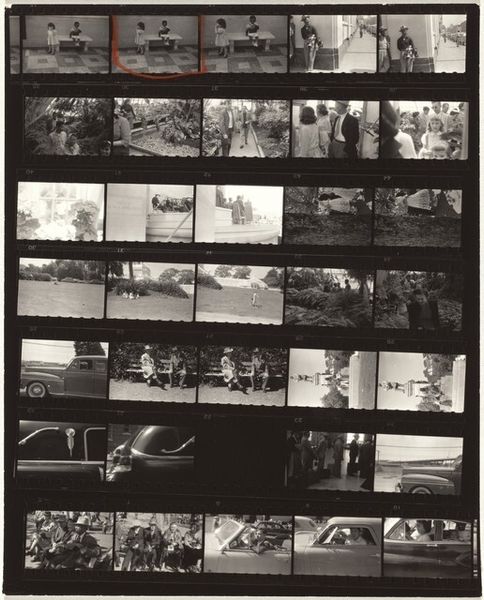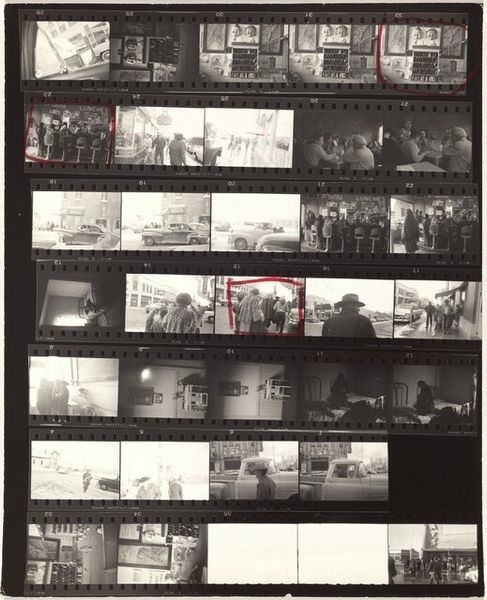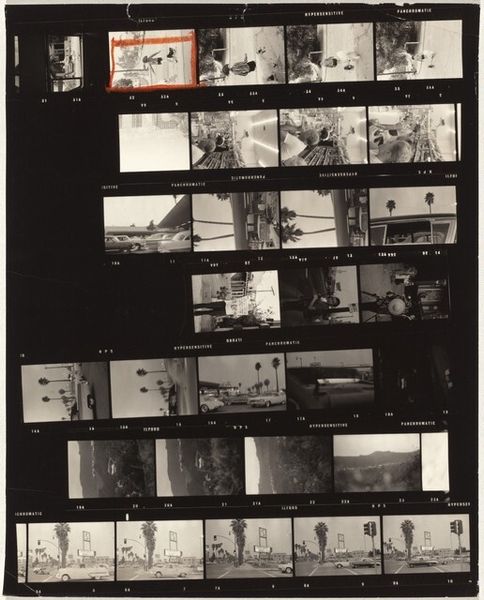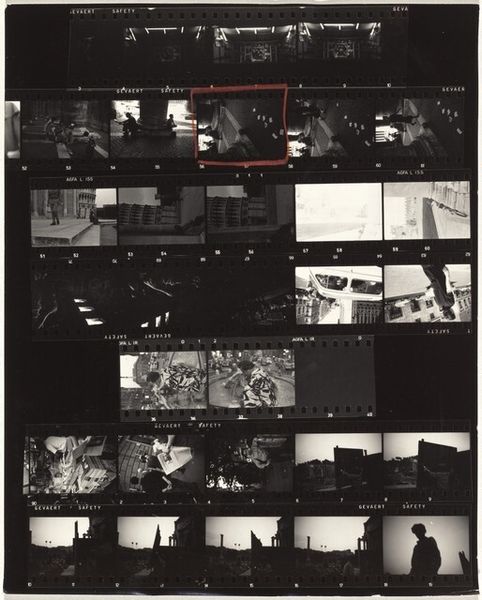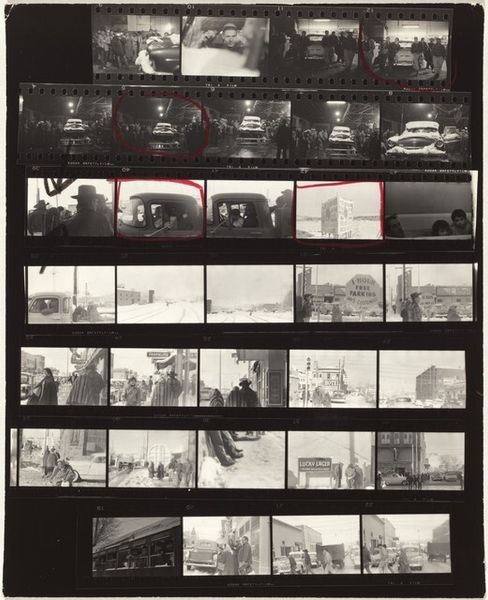
photography, gelatin-silver-print
#
film photography
#
landscape
#
street-photography
#
photography
#
gelatin-silver-print
#
film
#
realism
Dimensions: overall: 25.3 x 20.5 cm (9 15/16 x 8 1/16 in.)
Copyright: National Gallery of Art: CC0 1.0
Curator: This is Robert Frank’s “Guggenheim 378—Santa Fe, New Mexico” from 1955, a gelatin-silver print film photograph. What catches your eye first? Editor: The rawness of it, frankly. It feels incredibly unfiltered, immediate. Seeing the full contact sheet laid bare, with those red grease pencil marks...it's like peering into the artist's process, witnessing his edits unfold in real-time. Curator: Exactly! It throws the concept of the "decisive moment" into question. Are we looking at a selection of instants that spoke to Frank, or is the power precisely in the ensemble, in the edit itself? And thinking about the politics of the gaze in 1950s America...how did this visual style influence a generation grappling with social issues? Editor: That's what resonates with me – its subversion of the picturesque ideal that often sanitized the West. Frank's work isn’t romanticized; it hints at alienation, the harshness beneath the surface, particularly regarding depictions of marginalized people on the margins of several shots. We see glimpses into narratives far more complicated than what the mainstream presented. Curator: And it challenged photographic norms, no? The graininess, the slightly off-kilter compositions. But did that approach reinforce certain stereotypes? His work was certainly controversial, lauded by some, criticized by others for its bleakness. I'm thinking of later considerations of The Americans, particularly from voices of color... Editor: It opens critical dialogue, certainly. Are we implicating Robert Frank, as a filmmaker, as just another colonial gaze? I feel we have a new language and theory to grapple with race issues today, where The Americans was made almost 70 years ago now. This entire sheet, a whole language with framing in this artwork. It almost looks as if one artwork that had another layer to the editing. So postmodern. Curator: I see his perspective as undeniably influential. It shifted photographic discourse irrevocably. I mean, looking at this sheet, can you see how other social issue and editorial style films take heavy influence? How that film photography era translates to film and photography now, regarding light issues and overall shooting and production styles. Editor: For me, I will come back to these filmography frames and Robert Franks view every time I direct my camera lens into the light. This is more a language, I feel more and more!
Comments
No comments
Be the first to comment and join the conversation on the ultimate creative platform.
